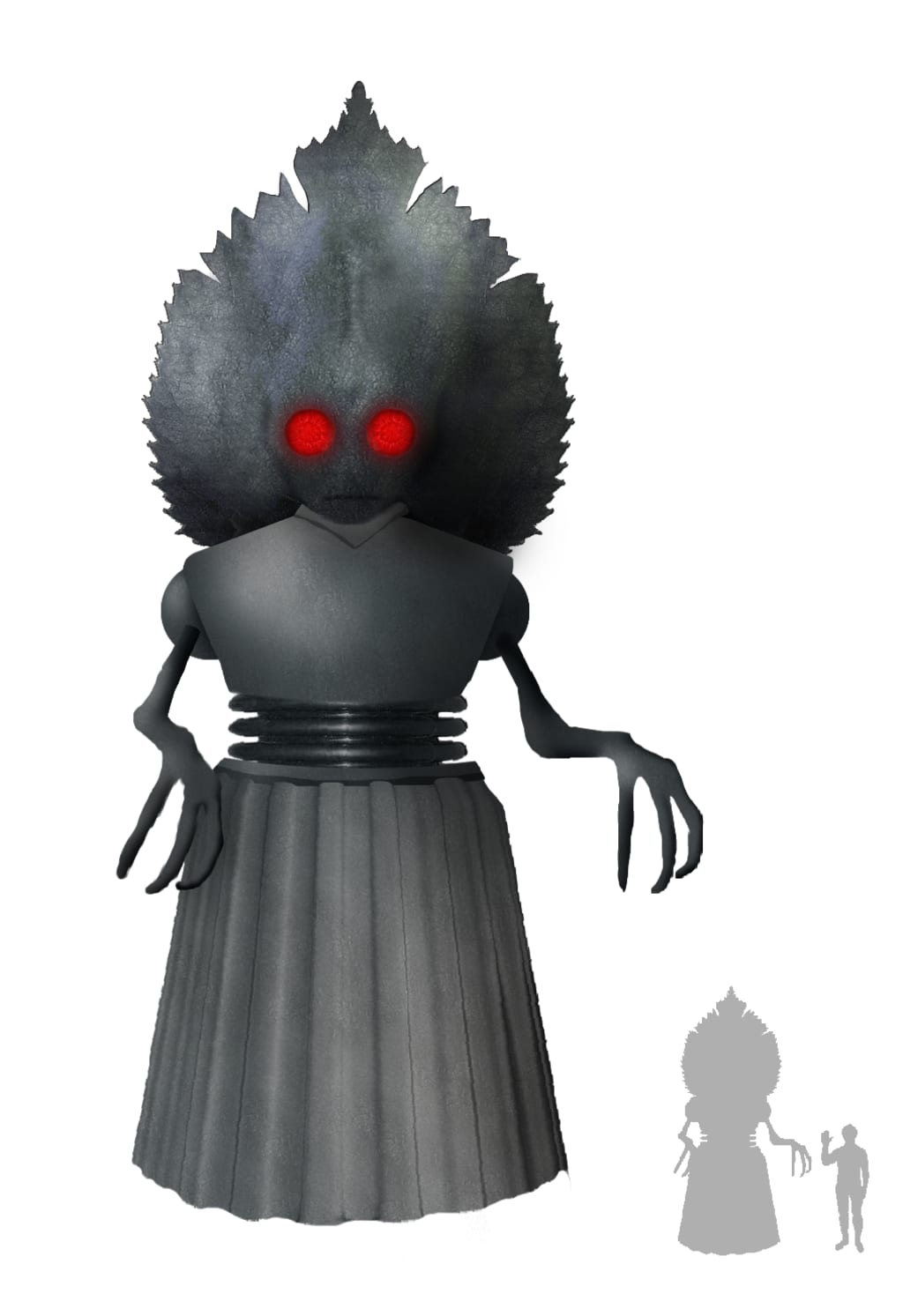
In 1952, a UFO supposedly crash-landed just outside of the tiny village of Flatwoods in Braxton County, West Virginia. When locals went to investigate, they were terrified by a close encounter with something otherworldly. The traumatizing event turned into a media sensation and even attracted the attention of the U.S. Air Force's infamous Project Blue Book. But what really happened in the woods that night? What was the Flatwoods Monster?
THE ENCOUNTER
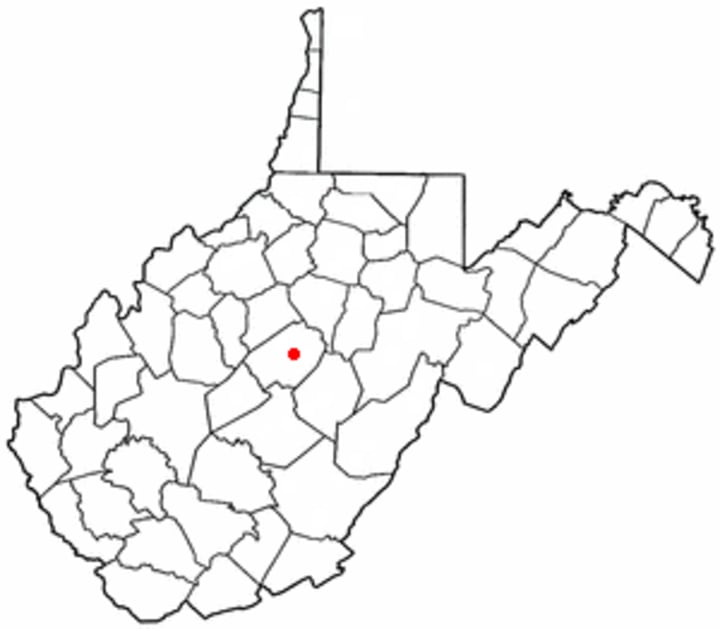
On 12 September 1952, at around 7 p.m., a group of boys was playing in the local schoolyard in Flatwoods, West Virginia. Ed May (13), Freddie May (12), and Tommy Hyer (10) saw a strange pulsing light flash across the sky and land on a nearby farmstead. The boys decided to go investigate but first stopped by the May brothers' home to grab a flashlight. After hearing their story, Ed and Freddie's mother, Kathleen May, accompanied them. Others also joined the group - Neil Nunley (14), Ronnie Shaver (10), Gene Lemon (17), and even Lemon's dog.
There are numerous (and somewhat contradictory) accounts of what happened when they arrived at the "landing" site. However, UFO author Gray Barker was quick to arrive on the scene and, a week after the event, began interviewing witnesses. (This was, in fact, Barker's first foray into writing about "high strangeness." He was a former Braxton County resident and hearing about the incident prompted him to return home to investigate, which in turn launched his career in the paranormal.)
Barker found that Neil Nunley's account was the most dispassionate and considered it to be the most reliable. It was Nunley's version of events that Barker published in an article for Fate Magazine, and later in his 1956 book, They Knew Too Much About Flying Saucers.
According to Nunley, he and Gene Lemon were at the head of the group that headed up the hill to where the light seemed to have landed. Approaching the site, they came across a strange mist that smelled faintly of gas or burning metal.
When they crested the hill, the first thing they saw was a "huge globular mass" (Barker, 1956), just down the other side of the hill, about 50 feet away from them. Nunley described it as being like a ball of fire and said that its light pulsed at regular intervals.
Although Nunley said that he didn't hear anything, the other witnesses claim that there was a low beating or thumping noise. They said there was a sort of hissing sound as well, similar to a jet plane.
It was at this point that Lemon, thinking that he saw animal eyes in a tree, swung his flashlight around and illuminated the creature that would be known as the Flatwoods Monster (also the Braxton County Monster or Phantom of Flatwoods).
The witnesses described it as being a somewhat humanoid-shaped figure, around 15 feet tall, with a round, blood-red face. They saw no nose or mouth, only eyes or eye-like openings. Some claimed that "greenish-orange" light beamed out from them. Around its face was a hood-like shape, reaching upwards to a point.
They only saw the upper half of its body, from head to waist. One of the children later drew a picture where the figure was outlined in fire. Mrs. May claimed that it appeared to have some sort of internal light source. She also said that there were cloth-like folds on the body and it had clawed hands. No one seemed to be certain if the creature stood on the ground or if it was floating.
They only got to look at the creature for a brief moment before it moved toward them, making a hissing noise. While some of the witnesses describe the thing's movement as bobbing up and down, as if jumping at them, Nunley was adamant that this was not so. He said that it moved in an arc, moving towards them but circling at the same time. "It just moved. It didn't walk. It moved evenly; it didn't jump" (Barker, 1956).
The group fled in terror, no doubt regretting their curiosity. Even the dog had been scared witless, as it was later found cowering and whining under a porch.
It was reported that the boys suffered from irritated noses and throats immediately following the incident and suffered from nausea and convulsions for weeks after. These symptoms have been attributed to exposure to the mysterious gas.
THE AFTERMATH
News travels startlingly fast in a small town, so it was only around half an hour after the incident that A. Lee Stewart, Jr., co-editor of local newspaper The Braxton Democrat, arrived. He attempted to interview the witnesses but found most of them too terrified to tell the story coherently. He talked Lemon into taking him to the site, but whatever had been there was gone. There was neither frightening creature nor strange light. The mist had dissipated, but Stewart knew that some gases settle quickly. He bent down to smell at ground level and found that the grass smelled much like the gas had been described, acrid and irritating.
He returned to the site the next morning and found what has been described as skid marks, spaced about 10 feet apart. These marks stretched from where the "monster" had been standing to where the strange globe of light had been resting. Where the globe had been, a large area of grass had been flattened.
Other curious Flatwoods residents, as well as the sheriff and a deputy, also checked out the area in the following weeks but found nothing.
On 19 September 1952, Kathleen May and Stewart flew to New York to film an interview for the CBS television show We the People. On the show, an artist drew a sketch based on May's description but took some dramatic license. The resulting sketch was so outrageous that it caused many to immediately denounce the whole thing as a hoax.
Barker, after arriving to investigate, had to wait for Mrs. May to return from New York before he was able to interview her. She claimed that she went back to the hilltop the next day and discovered a strange, grease-like substance. She accidentally got some on her clothing and found that no matter what she tried, it would not wash away. She also claimed that government officials had warned her not to give information to anybody.
In They Knew Too Much About Flying Saucers (1956), Barker claimed: "There were only wild rumors of governmental investigation. If the Air Force was interested, their concern was a well-kept secret." Despite Barker's dismissiveness, it turns out there was actually truth to those rumors. Project Blue Book, the U.S. Air Force's now famous series of investigations into UFO reports, ran from 1947 to 1969. Declassified documents show that the Air Force did, indeed, investigate the Flatwoods incident, but dismissed it as a "typical meteorite."
Barker was the first on-site investigator, but not the only one. He was soon followed by paranormal author Ivan T. Sanderson and "UFOlogist" Major Donald F. Keyhoe. Keyhoe published his findings in his 1953 book, Flying Saucers from Outer Space. Sanderson's findings were first published as a type-written report quoted in the 6 March 1966 issue of Sunday Gazette-Mail State Magazine and later in his 1967 book Uninvited Visitors: A Biologist Looks at UFOs.
The story, of course, made the local news. It was picked up by bigger outlets and became a media sensation. Its popularity should come as no surprise. This and other UFO reports fed into some of Cold War America's greatest fears - science run mad and impending doomsday.
AN EXPLANATION
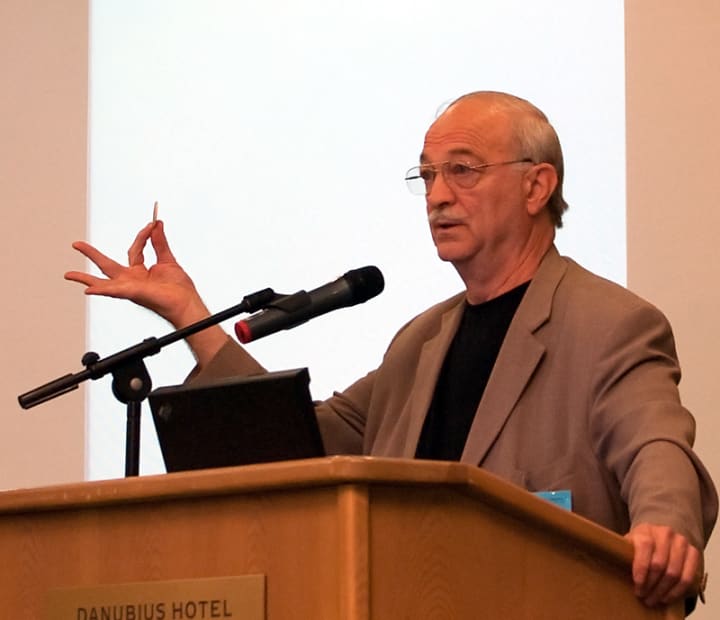
Joe Nickell, author and investigator for the Committee for Skeptical Inquiry, visited the site in June of 2000. After a thorough investigation - in which he inspected the site, interviewed witnesses, and examined all available documentation - he arrived at what today is considered the most plausible theory.
The first element of the story he took a look at was the supposed UFO itself. Although calling it a "UFO" would be a misnomer, since it was fairly quickly identified. According to the locals that Nickell interviewed, it was obvious to most who witnessed its flight across the sky that it was a meteor.
The Maryland Academy of Science reported a meteor passing over Baltimore at 7 p.m. on 12 September on a trajectory towards West Virginia. Local newspapers also reported the meteor, stating that it was seen traveling on a relatively horizontal trajectory across the states of Maryland, Pennsylvania, and West Virginia.
Keyhoe (1953) claimed that Air Force Intelligence had sent two investigators disguised as civilians to Flatwoods. Their investigation determined that the object was a meteor as well. It had "merely appeared to be landing when it disappeared over the hill." As mentioned before, declassified Project Blue Book documents would seem to back up this claim.
So, it's pretty safe to say that the "UFO" was not some sort of extraterrestrial craft and did not land in the woods that night. If this is true, however, then what was the pulsing light on the ground that the group saw?
It is known that there were three airplane beacons in the Flatwoods area at the time. These beacons produce a bright red signal that is used to help alert and guide aircraft. It is entirely possible that the group, on edge and expecting something strange, lost perspective and misinterpreted one of these lights on a nearby hill as hovering in front of them. The reported fog or mist could have helped cause this disorientation.
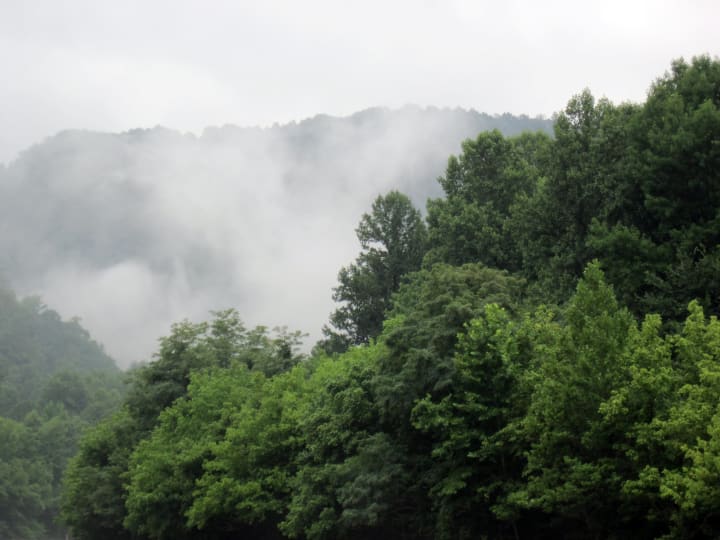
Some sources treat this fog as a strange or otherworldly occurrence, but it simply isn't. Appalachia is well known for its misty, foggy vistas. (It is even what gives a sub-range of the Appalachias, the Smokey Mountains, its name.) The phenomenon is not only a natural occurrence but a frequent one.
An explanation for the strange chemical smell can possibly be found in the local flora. Most investigators on the scene noticed no smell, except for Steward and Sanderson. Sanderson (1967) recognized it as coming from a type of grass that is common in the area, stating: "We found this grass growing all over the county and it always smelt the same, though not perhaps as strongly." This would explain why Stewart only detected the odor once he got close to the ground.
An alternate explanation can be found in the area's geology. Ryan Haupt (2014), on an episode of Skeptoid podcast, pointed out that West Virginia has numerous natural sulphur springs. He theorized that a nearby, but previously unidentified, sulphur spring could have been the source of the strange smell.
The supposed "landing traces" that were found the next morning by Stewart - skid marks and a gummy oil-like deposit - also have a fairly mundane source. A local man named Max Lockart explained that they were from his '42 Chevrolet pickup truck. The night of the incident, he drove to the site to look around. He left the dirt road and circled through the field but saw nothing - no monster, no landing traces in the grass.
Barker has tried to counter this by claiming that Lockhart had not been in the exact spot where the alleged traces were found. He entirely dismissed the possibility that the traces were left by a truck, tractor, or other vehicle.
However, Barker never actually saw the traces for himself. It had rained in the period between the incident and Barker's arrival a week later. Once he arrived, he found no traces of oil. He reported that he found "marks and a huge area of grass trampled down" but came to the conclusion that these were caused by the large groups of curiosity seekers that had since visited the location. So, it's likely that Barker did not know exactly where the traces were found and so could not say for certain whether Lockhart's truck had been in the same spot.
The most fantastic element of the story is the Flatwoods monster itself. Investigators are unanimous in the opinion that the monster was not an outright hoax. These people did encounter something that terrified them. But what was it?
According to Keyhoe (1953), the Air Force investigation concluded that the monster was most likely "a large owl perched on a limb." Underbrush beneath the limb probably gave the impression of a large figure and the witnesses' imaginations filled in the details. Barker (1953) reported that the witnesses could only vaguely describe the lower portion of the "creature" and most said that they could not see that part at all. This would be consistent with the Air Force's conclusion.
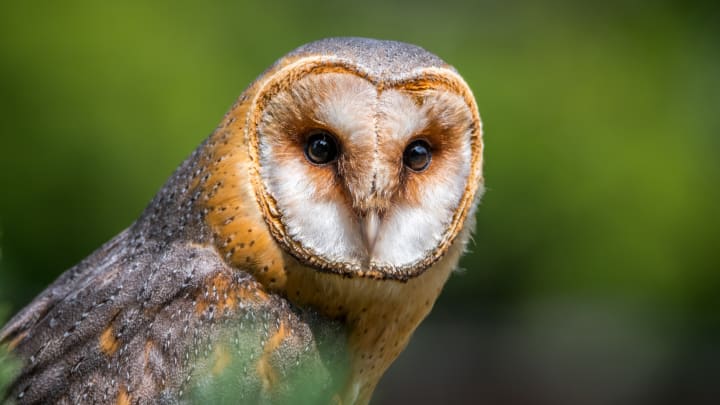
Nickel (2000) also believed that this conclusion was correct, but specified that it was an owl from the Tytonidae family, the barn owls. He stated: "Several elements in the witnesses' description help identify the Flatwoods creature specifically as Tyto alba, the common barn owl, known almost worldwide."
Descriptions of the creature's face - round, with two eye-like openings, surrounded by a hood-like shape - are consistent with the appearance of an owl. Barn owls have large heads with rounded, heart-shaped faces. Their white faces are surrounded by darker-colored feathers, giving the bird the appearance of wearing a hood.
The creature's cry was described as "something between a hiss and a high-pitched squeal" (Barker, 1953). This is also consistent with a barn owl, whose cry is described as "a long-harsh scream that lasts about 2 seconds." When intruders disturb a barn owl's nest, it will make a "loud, 3-4 second hiss" (The Cornell Lab, n.d.).
The witnesses have given various descriptions of the creature's movements. Some said that it bobbed up and down as if jumping. Nunley, the calmest witness, however, described it as moving evenly and gliding toward them in an arc, as if circling. This strongly suggests a bird's flight.
Mrs. May insisted that the creature had "terrible claws" and Sanderson (1967) reported that the witnesses described "small, claw-like hands that extended in front of it." This would match with a predatory bird trying to intimidate intruders who have disturbed its nest.
The creature's red coloring could be explained by the fact that female barn owls can be a darker, tawny color. It's also possible that the owl's white face reflected the red light of the nearby airplane beacons, giving it the impression of having a bright red face.
Nickell (2000) posited that his coloration identified the Flatwoods monster as a female barn owl. He further speculated that "it may not have been too late in the year for a female to have been brooding young." This would do much to explain its behavior. Instead of flying away at the first sign of intruders, she stood her ground. When the intruders did not retreat, instead shining a light in her direction, she swooped toward them while hissing in an attempt to scare them off.
Even the location where the event took place backs up the owl theory. The monster appeared near a large oak tree on a partially wooded hilltop that overlooked a nearby farm. As anybody who has lived in rural farmland can attest, it's pretty common to find barn owls in areas like these, nesting in a hollow tree.
It would be natural to question why a group of people who presumably grew up in rural farmlands would fail to recognize an owl. The short answer is that they saw something extraordinary because they were expecting something extraordinary.
The Roswell Incident had happened only five years previously, bringing the idea of UFOs and flying saucers into the public eye and making it a part of pop culture like never before. In fact, earlier that very year, LIFE Magazine published an article - "Have We Visitors from Space?" - which claimed there was "scientific evidence that there is a real case for interplanetary saucers."
Seeing a light streak across the sky and appear to land, then following it to find a pulsing red light and strange smell, would surely have made them think of flying saucers. So, of course, when they encountered a creature in the dark, acting aggressively and making terrifying noises, all their worst suspicions would have been confirmed. They panicked and fled, bringing back with them a tale that would capture the public imagination and create an enduring legend.
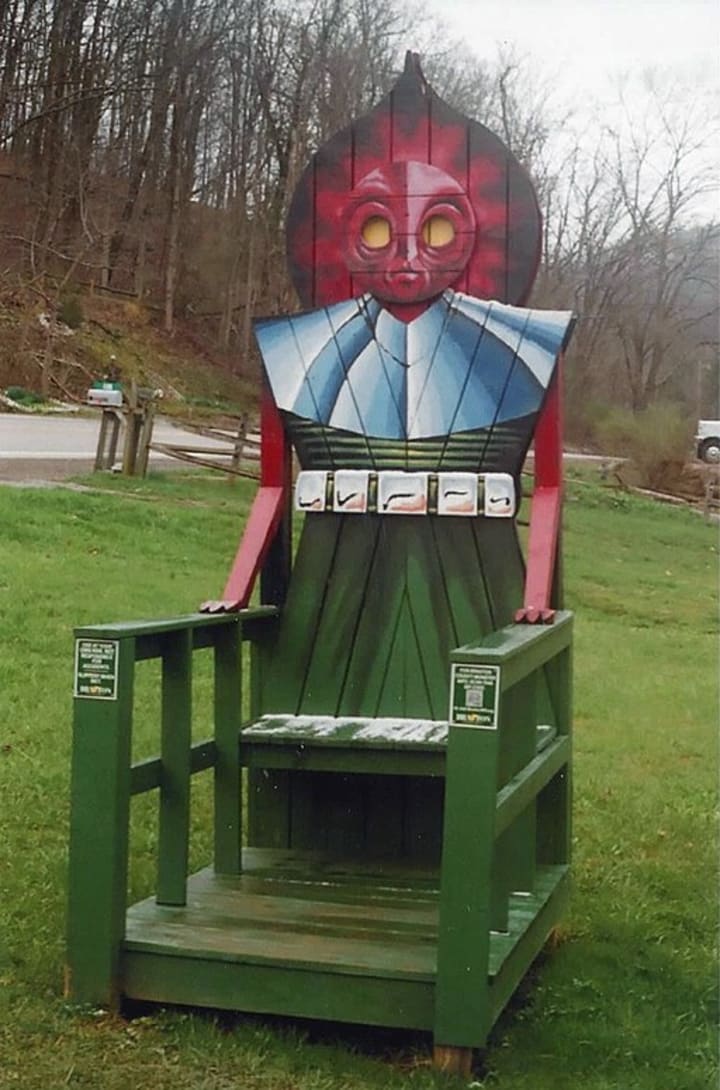
The incident has become a part of local culture, with many embracing it as a colorful part of their hometown history.
In 2017, the nearby town of Sutton opened the Flatwoods Monster Museum where visitors can learn about the incident and, of course, buy souvenirs. Those who are interested in visiting the museum can go to www.BraxtonWV.org or call 304-765-6533 for more information. (The Flatwoods site itself, however, is on private property and is not accessible to the public. Please be respectful and do not trespass.)
Nickell's investigation seems to have pretty thoroughly explained much of the story of the Flatwoods Monster. This incident, much like the Kelly-Hopkinsville Encounter, shows that nothing can cause chaos quite like an upset owl.
SOURCES
Barker, G. (1953). The monster and the saucer. Fate Magazine 6(1), 12-17.
Barker, G. (1956). They knew too much about flying saucers. New York, NY: University Books Inc.
Calwell, B. (2019, Feb. 16). UFO tourism gaining foothold in Braxton County. Charleston Gazette-Mail. Retrieved from https://www.wvgazettemail.com/metrokanawha/ufo-tourism-gaining-foothold-in-braxton-county/article_23c4a8e5-156d-5b39-95c5-b585adf290f7.html
Editors of Publications International Ltd. & Editors of Armchair Reader. (2008). Weird, scary, and unusual - Stories and facts (pp. 104-105). Lincolnwood, IL: West Side Publishing.
Haupt, R. (2014, Sept. 30). "The Braxton County Monster." Skeptoid Podcast. Retrieved from https://skeptoid.com/episodes/4434
Keyhoe, D.E. (1953). Flying saucers from outer space. New York: Henry Holt.
McGaha, J. & J. Nickell. (2012, May/Jun.). The Roswellian Syndrome: How some UFO myths develop. Skeptical Inquirer 36(3), 34. Retrieved from https://skepticalinquirer.org/2012/05/the_roswellian_syndrome_how_some_ufo_myths_develop/
Nickell, J. (2000, Nov./Dec.). The Flatwoods UFO Monster. Skeptical Inquirer 24(6), 15-19. Retrieved from https://skepticalinquirer.org/2000/11/the_flatwoods_ufo_monster/
Project 10073 Record Card. Project Blue Book, 1947-1969 (National Archives Microfilm Publication T1206, Roll 0015). The National Archives.
Sanderson, I.T. (1967). Unwanted visitors: A biologist looks at UFOs. New York: Cowles.
Sibley, D.A. (n.d.). Barn owl. Retrieved from https://www.audubon.org/field-guide/bird/barn-owl
The Cornell Lab. (n.d.). Barn owl. Retrieved from https://www.allaboutbirds.org/guide/Barn_Owl/sounds
Wenzl, R. (2018, Jul. 20). In 1952, the Flatwoods Monsters terrified 6 kids, a mom, and a dog - and the nation. Retrieved from https://www.history.com/news/flatwoods-monster-west-virginia
About the Creator
B. Jessee
Appalachian writer & nerd. Writes about the strangest bits of history and science as well as science news.
Enjoyed the story? Support the Creator.
Subscribe for free to receive all their stories in your feed. You could also pledge your support or give them a one-off tip, letting them know you appreciate their work.

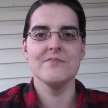




Comments
There are no comments for this story
Be the first to respond and start the conversation.